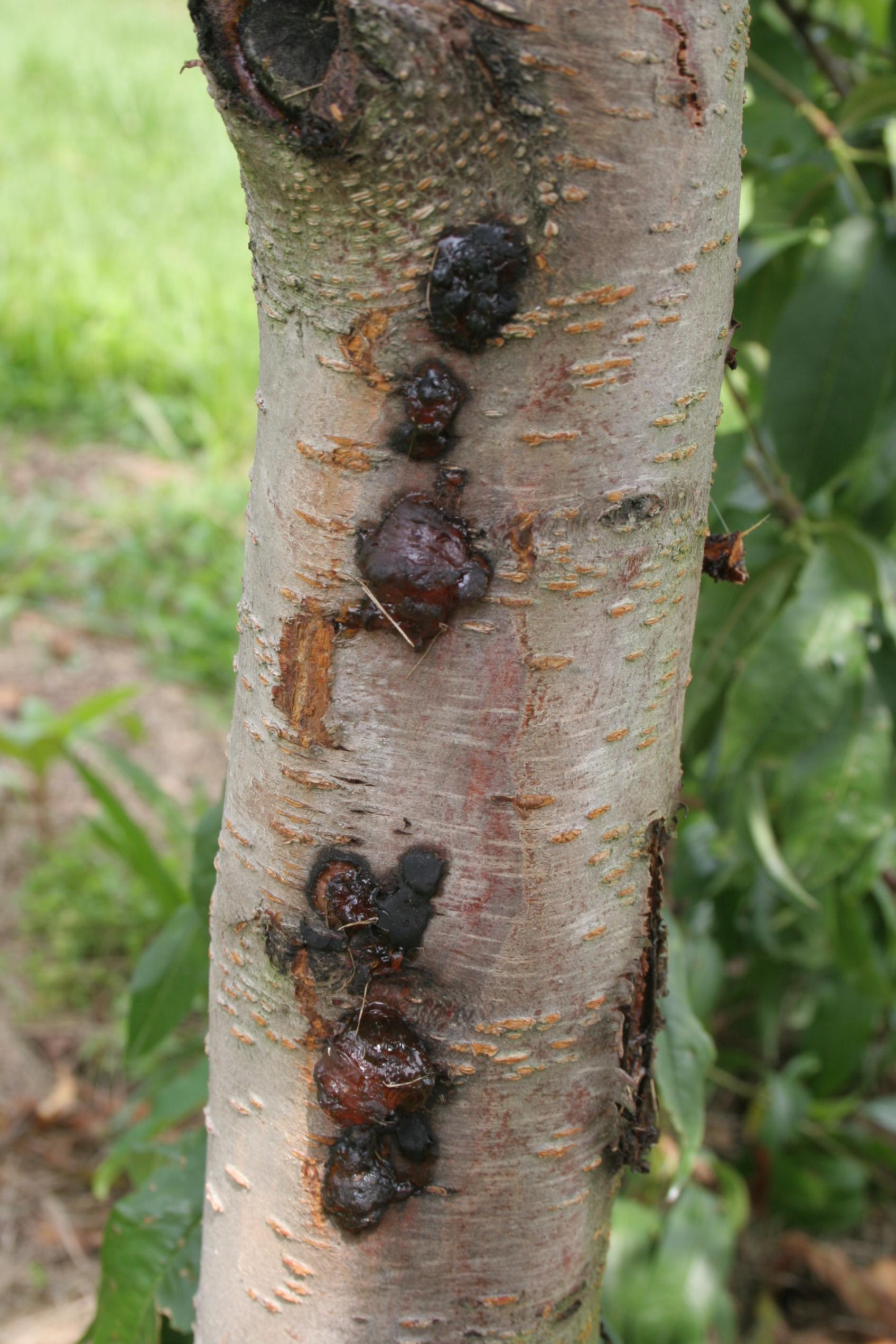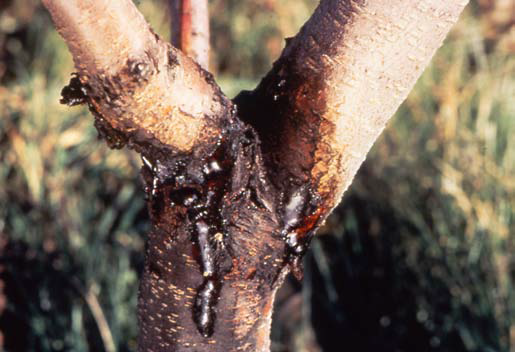Perennial Canker, Cytospora Canker, Leucostoma Canker, and Valsa Canker of Peach
Return to Diseases
Perennial canker, Cytospora canker, Leucostoma canker, Valsa canker (Leucostoma spp., formerly Cytospora spp.) results in cankers on branches of all stone fruit and flowering Prunus species. Initial symptoms include amber-colored oozing sap (gummosis) at the canker site. Callus tissue develops around canker edges during late summer, and decay resumes the next spring. This annual series of callus production eventually expands, and visible rings develop. Gummosis becomes more severe as cankers enlarge. Cankers surround (girdle) branches and branch death occurs. Causal fungi are weak pathogens that target wounded and stressed trees; they overwinter in cankers and in dead wood. Perennial canker may be confused with bacterial canker or with injury by boring insects (Lesser peachtree borer and Peachtree borer), which also result in gummosis. Perennial canker damage is limited to cambium tissue, but other wood decay fungi often enter through canker sites.

Early development of perennial canker (sunken lesion) with gummosis.
(Photo: John Strang, University of Kentucky)

Perennial canker advanced symptoms.
(Photo: Michael A. Ellis, Ohio State University)
Management:
- Avoid wounding (pruning, insects, sunscald, winter injury).
- Maintain vigor and reduce plant stress
- Consider planting cold-tolerant cultivars.
- Practice proper sanitation (remove infected wood; discard debris away from orchard; remove diseased wood before spring).
- Fungicides are ineffective.
